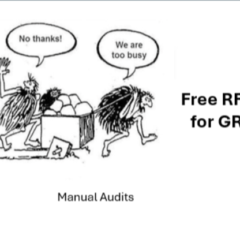In Hans Christian Andersen’s classic tale, The Emperor’s New Clothes, two swindlers deceive an emperor into believing he is wearing a magnificent suit of clothes, invisible to anyone who is “unfit for their office.” No one dares to admit they can’t see the outfit for fear of being labeled incompetent, until a child blurts out the obvious truth: the emperor has no clothes.
Today, in the world of IT security, we see a similar scenario playing out. Organizations proudly parade their compliance achievements, showcasing certificates and ticking off boxes on endless checklists. Yet, when the true test comes, it becomes painfully clear that the spirit of security—its very essence and effectiveness—has been lost in the illusion of compliance.
Compliance as a Facade
IT security compliance frameworks like ISO 27001, PCI-DSS, and SOC 2 were created with a noble aim: to build a robust baseline for protecting data and systems. However, in many organizations, these frameworks have become more about appearances and less about actual security. Compliance audits, instead of being meaningful assessments of risk, often devolve into superficial checklists that organizations race to complete. The result? A beautifully documented but poorly implemented security posture.
Imagine a compliance audit where all the right documents are available: policies are up-to-date, training records show every employee has been briefed, and vulnerability scans are neatly summarized. On paper, everything looks perfect. But probe a bit deeper, and cracks start to appear. Policies sit unread, training sessions are forgotten, and vulnerabilities remain unpatched long after they’ve been flagged.
The Real-World Impact
Much like the emperor’s imaginary clothes, this illusion of security can have devastating consequences. A recent study by the Ponemon Institute found that many organizations that suffered significant data breaches were technically “compliant” at the time. The breach didn’t occur because they lacked policies or failed an audit; it happened because security controls were never truly implemented in a meaningful, risk-reducing way.
Consider a scenario where a company claims full compliance with a regulation that mandates encryption. The encryption policy is signed and stored in a compliance folder, but sensitive data is still being transferred unencrypted between departments. Why? Because the implementation of the controls was never prioritized or tested beyond the confines of an audit.
The Moment of Truth
Every organization eventually encounters a moment when the veil falls away, and the truth is exposed. It could be a cybersecurity incident, an unscheduled review, or an external expert who points out the obvious: “The emperor has no clothes!” The painful realization comes when leaders recognize that meeting compliance requirements does not automatically translate to real-world security.
In one memorable case, a cybersecurity researcher visiting a firm pointed out a glaring issue. The company proudly presented their compliance documentation, showing an extensive list of firewalls and controls. However, the researcher quickly discovered that several critical systems were misconfigured, leaving the organization wide open to attacks. The issue wasn’t that they lacked controls; it was that these controls were never tested or monitored for effectiveness.
Building Security in the True Spirit
What can we learn from the emperor’s tale? The message is clear: we must prioritize genuine security over the illusion of compliance. Organizations should not just ask, “Are we compliant?” but rather, “Are we secure?” This shift in mindset requires a few crucial steps:
- From Checklists to Continuous Improvement: Compliance should be a byproduct of a well-functioning security program, not the end goal. Adopt a continuous monitoring approach where controls are regularly reviewed and adjusted to address emerging threats.
- Culture of Security Awareness: Training should be impactful and memorable, empowering employees to understand and act on security threats in their daily work, rather than just completing a mandatory compliance exercise.
- Testing Beyond the Audit: Perform real-world testing of your controls. This could include red team exercises, phishing simulations, and routine reviews of logs and alerts to ensure your systems are genuinely secure.
- Executive Buy-In: Leadership should be educated to understand the difference between compliance and security. Investments should be directed toward robust, actionable security measures, not just ticking off boxes for the next audit.
Conclusion
Just as the child in Andersen’s story bravely called out the emperor’s lack of clothes, it may take a courageous voice to point out when an organization’s security is just an illusion.
The lesson? In IT security, it’s not enough to look compliant. You have to be secure. It’s time we stop parading around in invisible clothing and start dressing our defenses for the real-world challenges they must face.


















Recent Comments